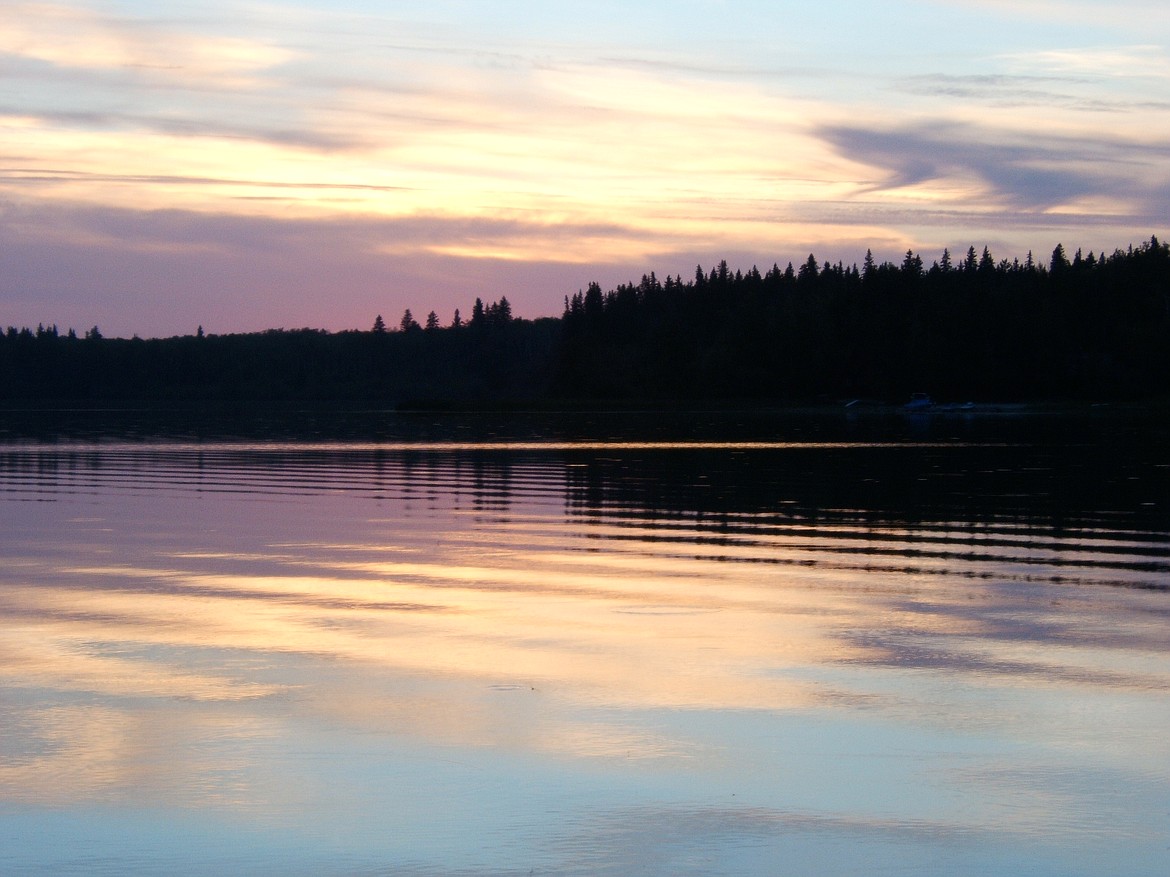OUR GEM: Climate and the health of Our Gem
When our temperatures dip below zero, it’s hard to imagine how overall warming temperatures might be impacting our lake. Unfortunately, despite some frigid stretches, Coeur d’Alene Lake is already experiencing increases in temperature that can impact many aspects of its ecological health, including water quality and fish habitat. As part of our monitoring efforts on Coeur d’Alene Lake, both the Coeur d’Alene Tribe and IDEQ have collected temperature data on the lake for several decades, and trends show that overall, the lake is warming earlier in the spring, and staying warmer for longer. This is in line with international research which has found that globally, freshwater lakes are warming an average of 0.34°C per decade, which is faster than observed rises in air and ocean temperatures (O’Reilly, et al., 2015). In Coeur d’Alene Lake, the Coeur d’Alene Tribe’s data collected at our sampling site just south of Harrison shows temperatures in the summer months increasing in surface waters (waters between 1-3 meters deep) an average of 0.1°C per year since 2003, or roughly 2°C (3.6°F) over the past two decades. These warmer temperatures increase the risk of toxic blue-green algae blooms, create unfavorable conditions for our native cold water fish species, and increase the occurrence and length of lake stratification, whereby temperature-influenced density layers form and reduce the mixing of oxygen into the deeper waters of the lake.
Stratification occurs in many lakes, but in Coeur d’Alene Lake, it is of special concern because of the lake’s unique history. When there is little to no oxygen in deep waters the chemistry at the bottom of the lake may change in a way that results in sediments releasing nutrients like phosphorus into the lake’s waters. In metals-contaminated areas, heavy metals like lead, arsenic, and zinc can also be re-released under these conditions, posing environmental and human health concerns. We are already observing strong stratification and phosphorus release from sediments in southern waters. The number of days that our data collection site “C6” (located in Chatcolet Lake on the southern end of Coeur d’Alene Lake) has experienced anoxia, or zero dissolved oxygen, at one meter above lake bottom has increased by 3.2 days per year since 2011. In 2022, it experienced a record 83 days of anoxia!
In addition to warming temperatures, Coeur d’Alene Lake will be impacted by changes in timing and quantity of flows from its tributaries, including the St. Joe and Coeur d’Alene Rivers and the many streams across the Basin. Decreasing snowpack in the Basin’s high mountains, accompanied by earlier run-off events means that the waters that feed into the lake are likely to decline earlier in the year. This can have significant impact on both our fisheries and on recreation, decreasing river flows and even impacting summer lake levels.
So how can we protect Coeur d’Alene and ensure that its waters stay swimmable and fishable for future generations? Just like the issue of climate change, there is no simple answer. First, we need to urgently address the existing recommendations for protecting Our Gem’s health. We need to reduce nutrients coming into the lake waters from various land uses (timber, development, wastewater, etc.) in order to mitigate the impacts of warmer temperatures that are beyond our immediate control. Second, we must do what we can to counter decreases in snowpack and warming temperatures by protecting and restoring riparian areas along waterways that shade help keep waters cool and habitable. Additionally, we need to adopt water conservation measures so that we are not overusing groundwater that can provide important cold-water recharge to our streams. Finally, while our actions may not be able to locally reduce temperatures, we must play our part in reducing our greenhouse gas emissions. We can all reduce our personal carbon emissions by reducing our home energy use, driving less, carpooling, using public transportation, and, when possible, purchasing low-emissions vehicles, or at least more fuel-efficient cars. We can reduce our water use by planting drought-tolerant native plants, and watering in the cool hours of the evening and early morning. Individuals, families, businesses, and our local governments can determine their carbon footprint using tools like the one provided by EPA: https://www3.epa.gov/carbon-footprint-calculator/, and then use that information to make smart, climate-friendly decisions.
Coeur d’Alene Lake is the heart of our community, and it takes all of us to protect it for future generations. Though climate change is a global issue, local action can make an impact on the long-term health of Our Gem, chatq’ele’, Coeur d’Alene Lake. For more information on climate change in our state, you can check out the Idaho Climate Economic Impact Assessment, at: https://www.uidaho.edu/president/direct-reports/mcclure-center/iceia.
• • •
Laura Laumatia is the environmental programs manager with the Coeur d’Alene Tribe.
The Our Gem Coeur d’Alene Lake Collaborative is a team of committed and passionate professionals working to preserve lake health and protect water quality by promoting community awareness of local water resources through education, outreach and stewardship. Our Gem includes local experts from the University of Idaho Community Water Resource Center, Coeur d’Alene Tribe, Idaho Department of Environmental Quality, Kootenai Environmental Alliance, Coeur d’Alene Regional Chamber of Commerce, Kootenai County and CDA 2030.

